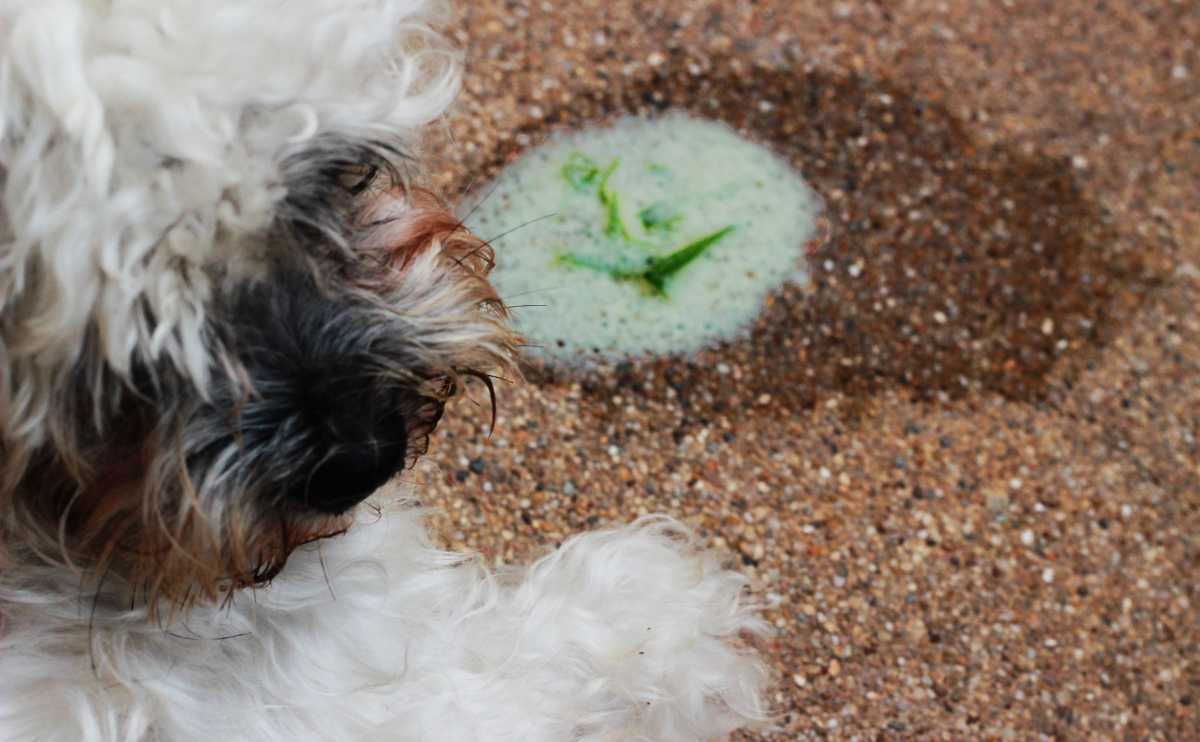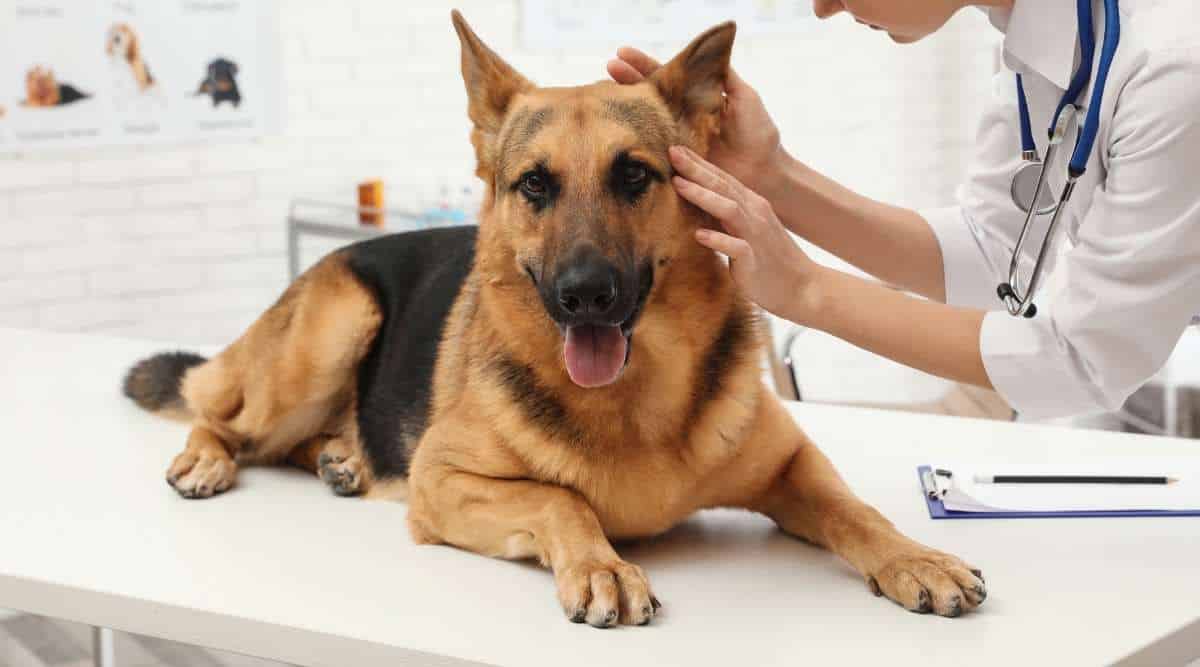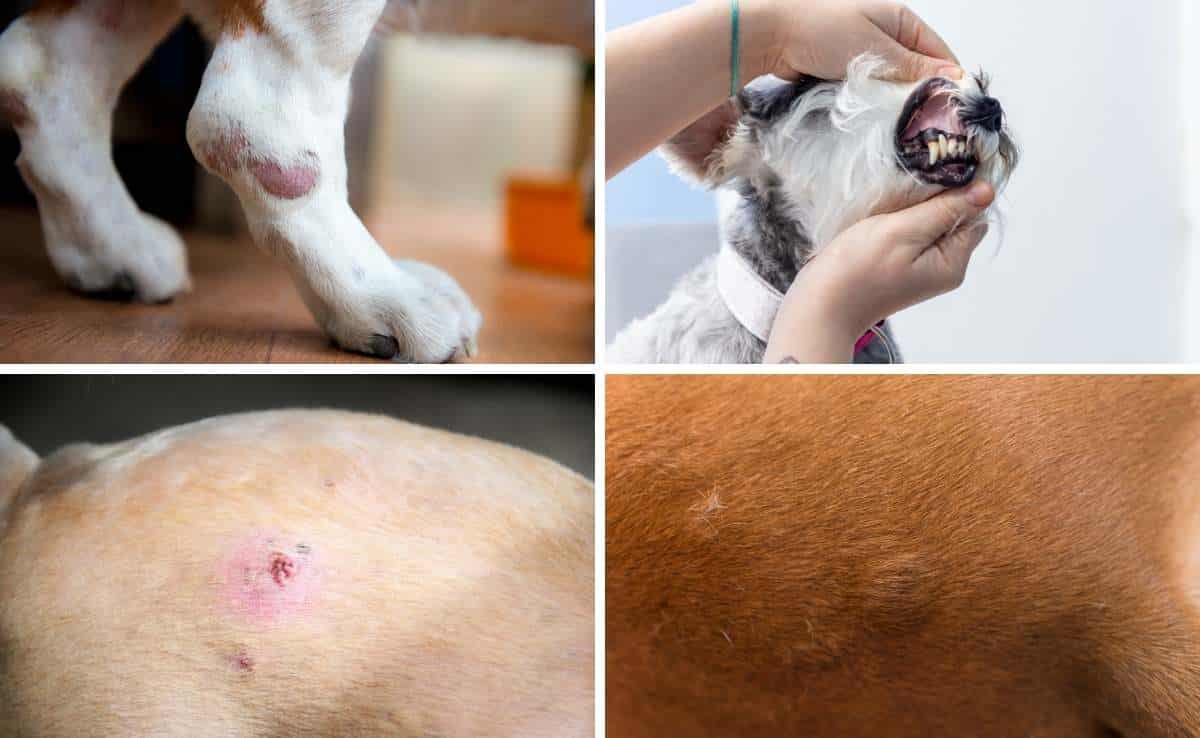Can Dogs Get Hairballs? What Every Dog Parent Needs To Know!
When you purchase through links on our site, we may earn a commission. Here’s how it works.
If you share your home with a cat or two, you’re probably familiar with the concept of hairballs. You might even have noticed your cat coughing and retching one minute, only to produce a sausage of damp, matted fur the next. So, we know that cats can get hairballs, and they’re more likely to be affected if they have a long coat or are losing fur. But can dogs get hairballs like cats? Let’s find out all about hairballs and trichobezoar in dogs.
Table of Contents
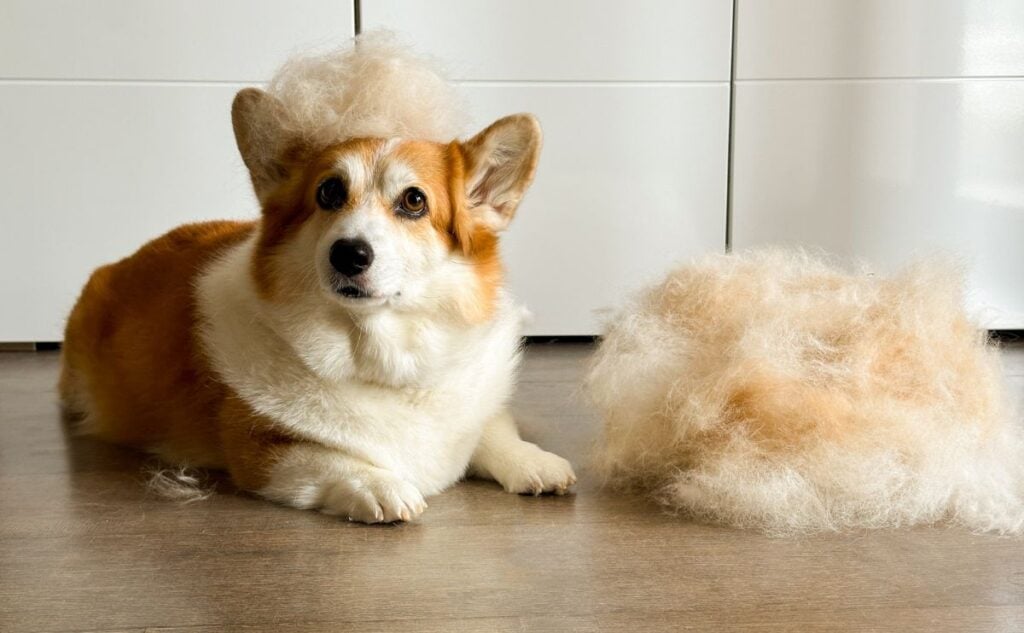
Do Dogs Get Hairballs?
So, can dogs get hairballs from licking? They absolutely can. Although it’s not as common as in cats, dogs can develop hairballs in just the same way, especially if they’ve got long fur, aren’t brushed often, or are shedding their coat. I’ve seen many cats with hairballs, but so far no dogs, although I have colleagues who have.
What Is A Trichobezoar?
Another name for a hairball, trichobezoars are clumps of fur and debris that have become lodged in the gut and caused a blockage. This might be in the stomach itself, or it might be in the small intestine. Blockages that manage to make it into the large intestine are far less likely to get stuck because there’s more space and more lubrication. However, occasionally, trichobezoars can lodge in this area and cause symptoms similar to constipation.
Dog Hairball Symptoms
If your dog has a hairball, you might notice some of the following symptoms:
- Coughing
- Gagging
- Vomiting with or without a hairball produced
- Fur in their stools
- Reduced appetite
- Straining to pass feces
- Constipation
- Abdominal pain or discomfort (whining or praying position)
Of course, some dogs won’t show any symptoms at all until the furball is coughed up, passed in the stools, or forms an obstruction.
What Do Dog Hairballs Look Like?
Dog hairballs look similar to cat hairballs, although they’re often bigger, with the fur being more substantial. Just imagine a sausage-shaped clump of matted fur. The appearance of the hairball might also depend on whether it’s been coughed up, in which case it may be covered in saliva, mucus, bile, or food or passed in the stools, where it might be coated in mucus or feces.
Dog Hairball Treatment
If your dog has a hairball, the treatment they need will depend on their symptoms and where the hairball is located. If they cough up a furball and seem fine afterward, they probably don’t need any treatment at all. However, it’s a good idea to keep them well-hydrated and monitor them closely for any more signs.
On the other hand, if your dog has a gut blockage caused by a hairball, they could end up unable to keep food and water down, which means they could become dehydrated and weak. In this situation, it’s important to seek veterinary help as soon as possible. If the signs are mild, the vet may be able to prescribe an oral liquid to lubricate the hairball and help it pass through their gut.
However, in the case of a full obstruction, the vet may need to operate to remove the blockage.
Affording Expensive Vet Care
An intestinal blockage is a serious condition and can cost thousands of dollars for surgery. Here’s where having pet insurance can save your dog’s life and your finances. Pet insurance can be an excellent investment in your dog’s health by covering a large portion of vet bills for unexpected illnesses and accidents. However, it’s important to get a policy before your pup develops health problems. Otherwise, it’s considered a pre-existing condition and likely won’t be covered. See my colleague’s expert reviews of the best pet insurance providers to learn more.
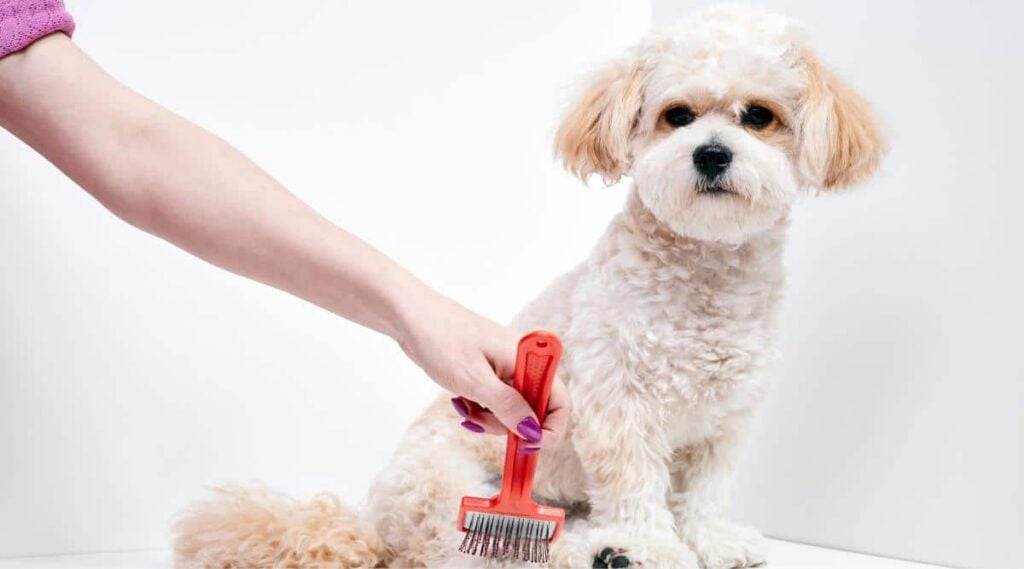
How Can You Prevent Dog Hairballs?
If your dog has had hairballs in the past, has a long coat, or sheds a lot of fur, it’s a good idea to brush and groom them regularly. A daily brush will remove loose or dead hair, preventing it from being ingested the next time they lick themselves. It’s also a good idea to keep your dog as hydrated as possible since good hydration means there is less chance of a gut blockage. Check out our top picks for the best dog water fountains if you struggle to keep your dog’s bowl filled with clean water.
If hairballs are a regular problem, your vet may prescribe an oral preventative to bind the fur together and lubricate it until it passes in the stools. If you think your dog might need some treatment for hairballs, speak to your veterinarian.
Frequently Asked Questions
Here are some of the most common questions and my answers to dog hairball issues. If you don’t see your here, please ask us in our comments, and we’ll do our best to answer your question.
My Dog Threw Up A Hairball, What Should I Do?
If your dog threw up a hairball but seemed well and was acting normally before and after, it’s unlikely to be a problem. However, monitoring for further signs would be sensible. If your dog has other symptoms as well as bringing up a furball, it’s a good idea to make an appointment with your veterinarian.
Is There A Dog Hairball Remedy?
Most dog and cat hairball preventative treatments work by binding the hair together and lubricating it as it passes through the intestines. While most products are marketed for cats, your veterinarian will be able to help find one that’s suitable for your dog.
What Is The Dog Hairball Blockage Treatment?
Bezoar in dogs, an obstruction of the gut caused by hair, can be serious. A gut obstruction can cause vomiting, dehydration, belly pain, and collapse. If a blockage has occurred and the symptoms are severe, or if a mild blockage won’t clear with some oral lubricant solution, the veterinarian may need to perform surgery to remove the hairball.
Need Tips On Keeping Your Dog’s Coat Under Control?
Keeping your dog’s coat in prime condition is the best prevention for trichobezoar in dogs. We have a lot of grooming tips for all kinds of coats. Check out our comprehensive guide on how to groom a dog, including their hair, nails, ears, and more. This guide also has many grooming product recommendations for the best results.

